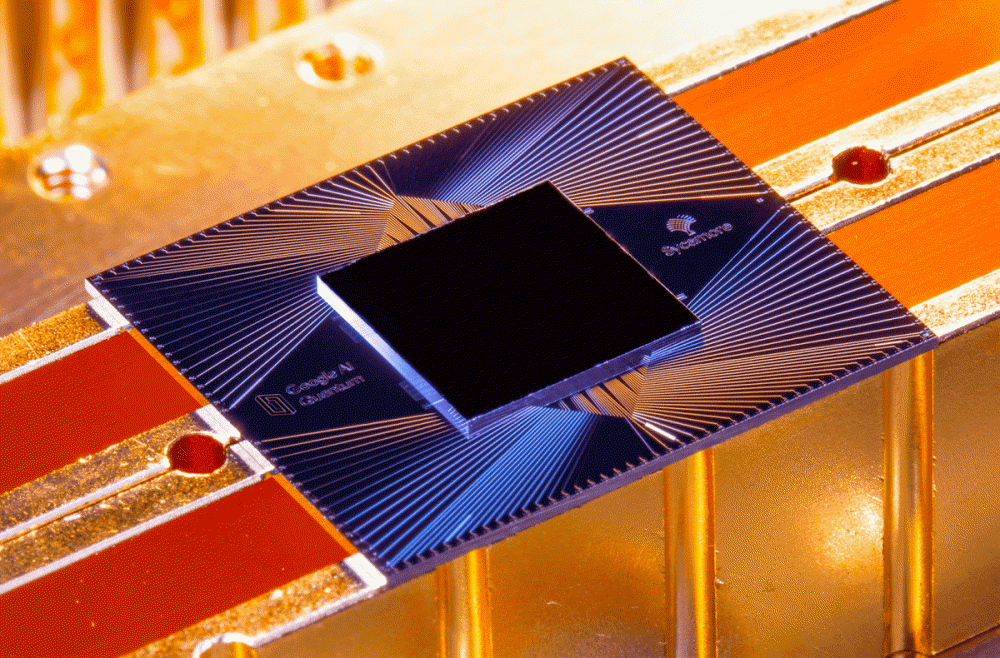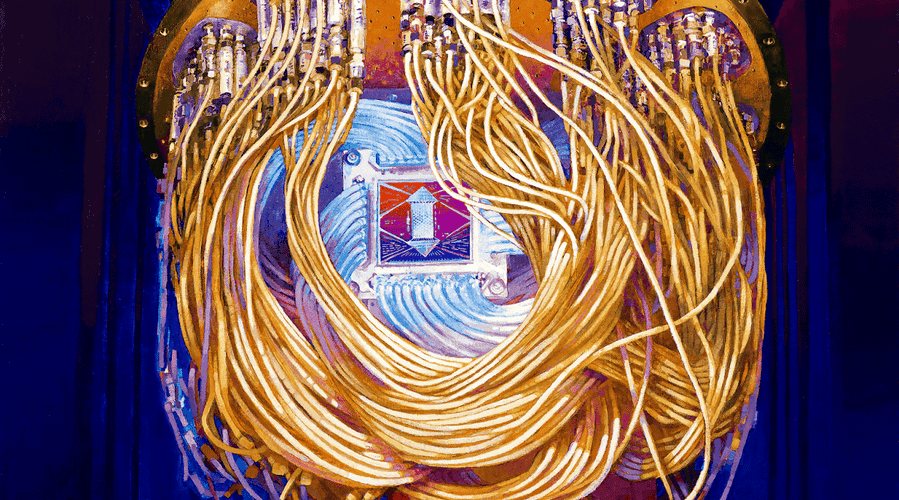Google announced that it has developed a quantum computer that can solve a 10,000-year computational problem in 3 minutes and 20 seconds with the world’s fastest supercomputer.

Quantum computers process information using qubits instead of bits, which are the units that existing computers process information. Bits can be either 0 or 1. Accordingly, inside the existing computer, all information is processed as a sequence of bits. In contrast, quantum bits use quantum mechanical superposition that is not 0 or 1, but can also be 0 or 1. Using these quantum bits, you can perform a huge amount of computation at the same time.
In order to develop a quantum computer, Google first developed a processor for a quantum computer called Sycamore, which is fast and stable with 53 qubits. Each quantum bit is connected to four other qubits, and the quantum bits interact and calculate. The 53 quantum bits can be multidimensionally calculated even to the power of 2 to the 53rd.
Existing quantum computer processors have many errors due to noise, and their practicality has been questioned. But Sycamore said he improved the problem with a new control knob that pulls out the interaction between adjacent quantum bits. Accordingly, even if multiple qubits were connected, errors could be greatly reduced.
As a result of conducting quantum computer benchmarks including Sycamore, it is said that the world’s fastest supercomputer solved a computational problem that would take 10,000 years in 200 seconds, or 3 minutes and 20 seconds.
In this announcement, Google has also achieved quantum transcendence around the spring of 2019, which indicates that it has computational power that is impossible on conventional computers. Quantum computers with Sycamore are said to be fully programmable and capable of executing general purpose quantum algorithms.

However, Google’s rival, IBM, denied that Google was unable to prove quantum transcendence. Google said its quantum processor Sycamore solved a 10,000-year task with Summit, a supercomputer at the Oak Ridge National Laboratory, in 3 minutes and 20 seconds. IBM’s Quantum Computing Division posted an article (On “Quantum Supremacy”), and the original meaning of quantum computers is that computations that cannot be solved in classical computers can be solved with quantum computers. He pointed out that this condition is not met.
IBM estimates that Google will take 10,000 years at the summit, but it is analyzed that the same task can be solved at the summit in just 2.5 days by simulating while recording the 53 qubit quantum state on the Summit 250PB hard disk using an algorithm called Schrödinger=Fineman algorithm. did.
One expert, of course, is theoretical to the last, and although IBM did not run the simulation at the summit, IBM’s analysis, which calculated 2.5 days at the summit, is generally correct. On the other hand, although it can be compared to quantum computers by storing all 53 qubit quantum states on the Summit hard disk, if Google increases Sycamore quantum bits to 55, it will easily exceed the storage capacity of Summit. If you increase it to 60, you need 33 summits, and if you increase it to 70, you need enough summits to fill one city. Of course, it is not easy to increase one quantum bit, but the computational power of classical computers is that they cannot keep up with quantum computers.
Quantum transcendence refers to the fact that quantum computers have computational powers that are not feasible in conventional computers. Some say that Google has realized quantum transcendence, but when quantum transcendence is realized, there is no code that cannot be read. However, all devices being developed by IBM or Google are 50 to 100 qubits and do not correct errors. It is known that thousands of qubits are required to break things like RSA ciphers, and this is an area that cannot be achieved with existing Google technology. If error correction techniques are used, it can be said that a higher level is achieved, but it will take time to realize.
In addition, even if quantum computers realize that conventional computers were difficult, they may ask what they are doing if the problem itself is meaningless. Quantum computers don’t solve everything, but they are by no means pointless, and solving a few problems may suffice. It’s worth remembering that when the Wright brothers first invented the Wright Flyer, people at the time thought that air travel was fundamentally impossible, and initially dismissed the propeller as a dead vehicle.
In addition, the results of the quantum computer’s experiment are tested with an existing computer. In other words, even if the speed is slow, if a simulation like a quantum computer can be performed with an existing computer, can this be called quantum transcendence? This can be multi-million times faster using a 53-qubit chip, but the speed increases exponentially as the number of qubits increases.
If Google’s announcement is correct, the next milestone will be the use of programmable 50-100 qubit quantum computers. It will be possible to perform useful quantum simulations at a faster rate than conventional computers. Beyond quantum transcendence, realizing a system with useful error correction could be the next milestone. Related information can be found here .


















Add comment